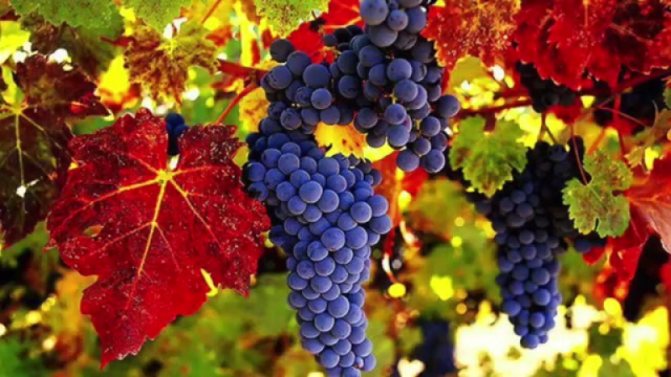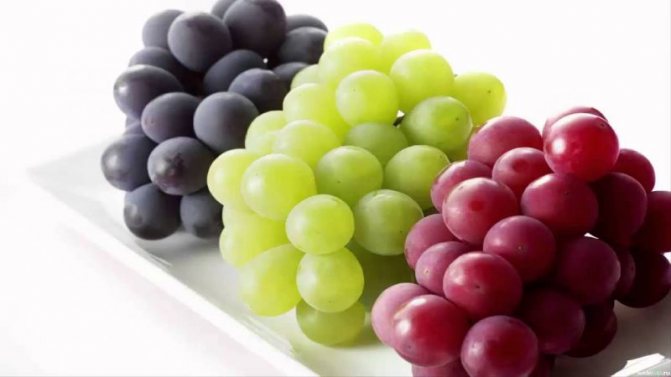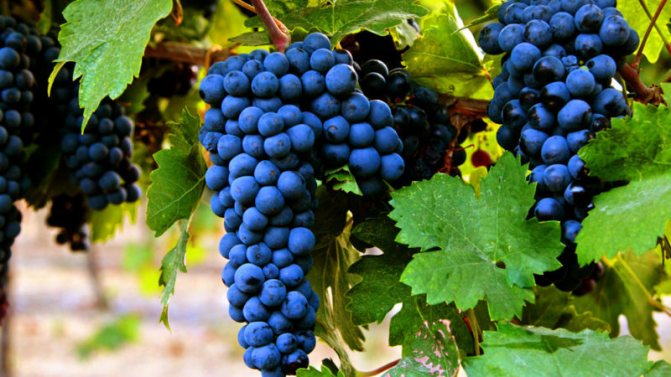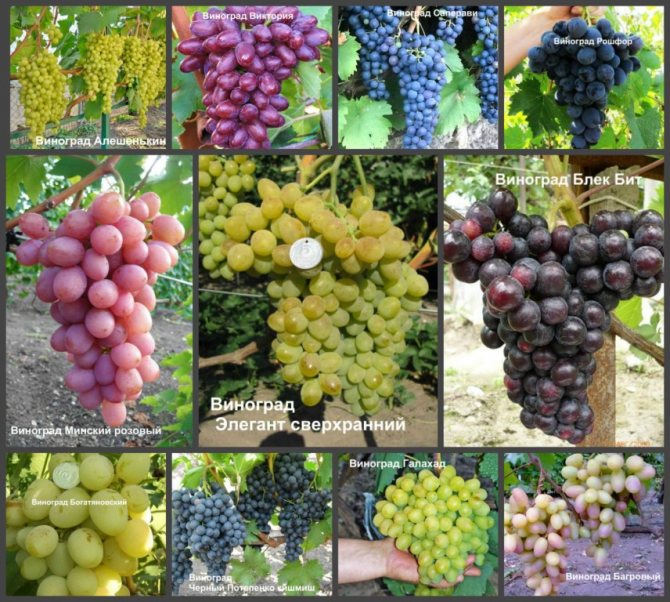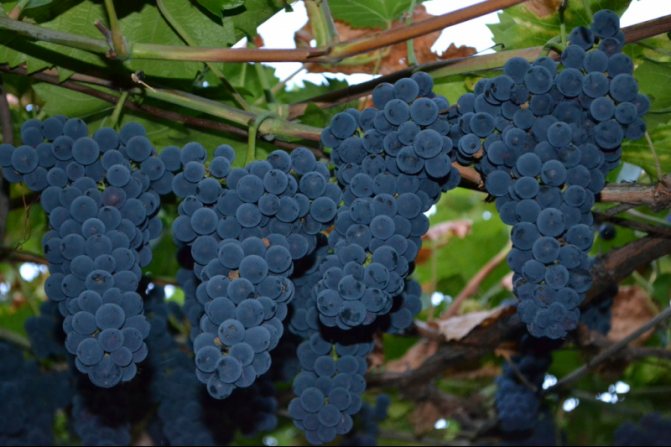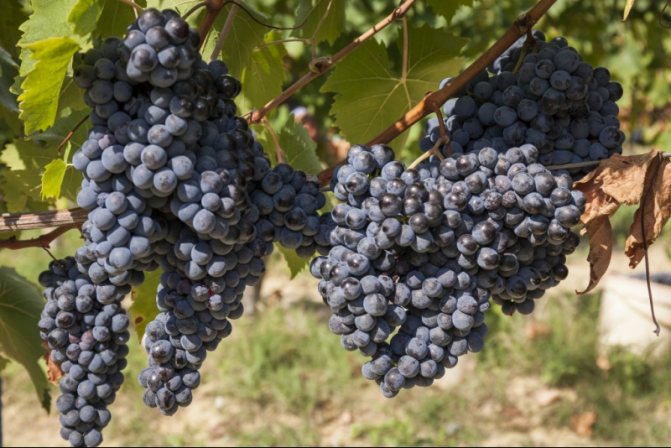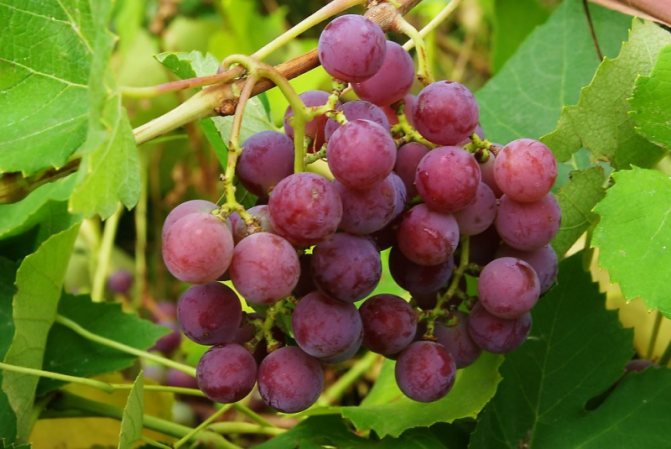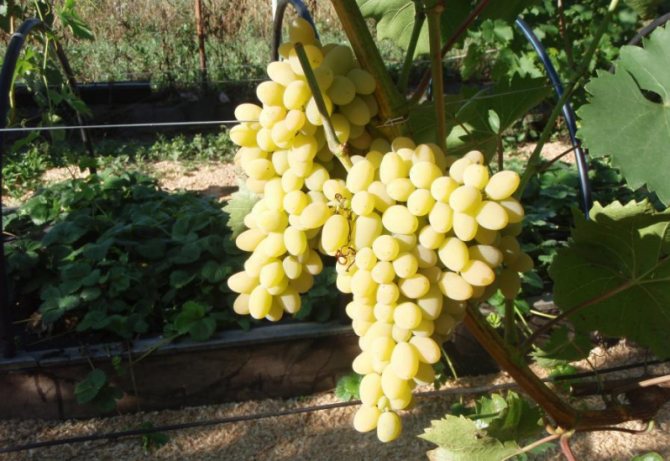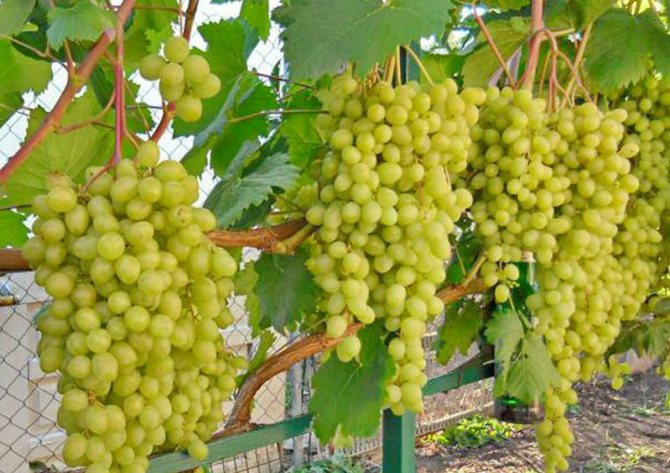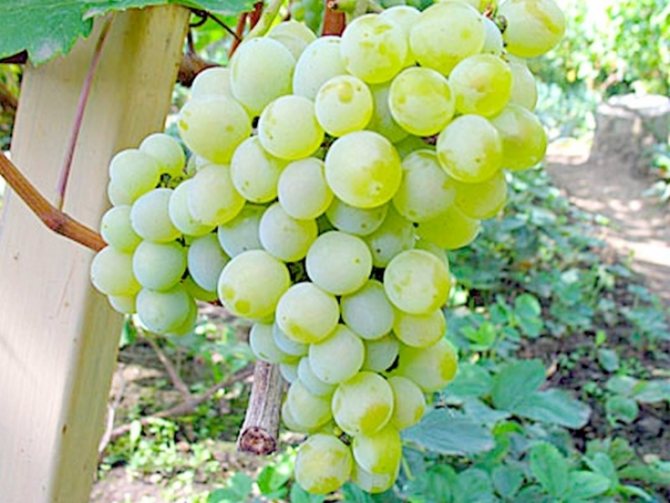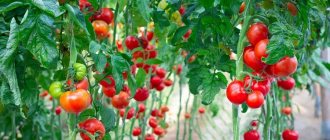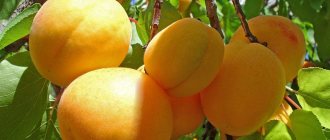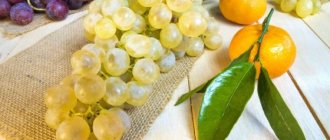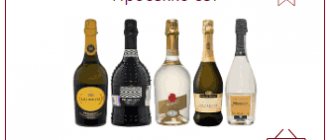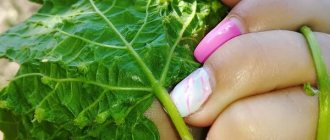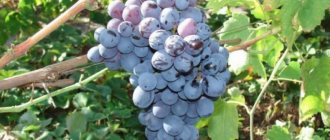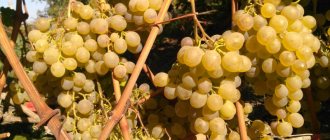When breeding grapes, it is necessary to adhere to many nuances, because this plant is capricious. One of the main requirements is to provide a reliable shelter in the winter. This creates a number of inconveniences, especially if the grapes grow in the country, and not in a nearby area. In this case, preference should be given to unpretentious frost-resistant grape varieties, the cultivation of which extends to different climatic zones. An overview of the best frost-resistant grapes, as well as the nuances of caring for them, are discussed in our article.
Benefits of frost-resistant species
The most important plus of the frost resistance of this plant is that there is no need to create a shelter for it for the winter. At the same time, you can choose table and dessert, dark and light varieties.
If you properly care for the bush at a young age, then, having strengthened, it will be strong enough to withstand frosts down to -33 ° C. Gradual hardening will benefit the plant. To do this, it is enough to annually reduce the period of being in the shelter of the bush.

Sun berries
For your information! In the fall, the bush should be covered a little later than last year, and in the spring it should be opened a little earlier.
The concept of frost resistance of a grape variety
In reference books on viticulture, the definition of the frost resistance of the variety is given. Frost resistance of grapes is the ability of its vegetative system in winter to withstand for a short time a drop in temperature to the values specified in the characteristics of the variety, without damage or with minimal damage to the eyes of one-year-old shoot. In short, this is the resistance of the variety to critical negative temperatures. This means that at a certain low temperature those parts of the plant that further determine the fruiting and yield of the crop do not die. With a sharp drop in air temperature in winter, the buds (eyes) of the vine first freeze out, then the bark and cambium of the plant's wood are damaged. This applies primarily to young seedlings of one and two years of age. Such a characteristic as frost resistance is determined for each grape variety empirically. The degree of frost resistance is derived on the basis of the results of long-term observations of the development of plants under the conditions of the experimental station. This indicator is the nominal (standard) value. In real conditions, sometimes significantly different from favorable ones, the frost resistance of grapes turns out to be lower than the declared one.
Table: grouping of grape varieties according to the degree of frost resistance
| Group no. | Characteristics of frost resistance of the variety | Critical temperatures, deg. FROM | The absolute minimum temperature for non-sheltering culture, deg. FROM |
| 1 | Frost-resistant | -17–18 | -15 |
| 2 | Slightly frost resistant | -19–20 | -17 |
| 3 | Medium frost resistance | -21–22 | -19 |
| 4 | Relatively frost resistant | -23–24 | -21 |
| 5 | Increased frost resistance | -25–27 | -23 |
At critical low temperatures, freezing of up to 50% of fruit buds (eyes) is possible. A further decrease in temperature increases this figure to 80%. Frost damage to annual seedlings, in which not only generative buds freeze, but also wood, causes the death of the entire bush. The index of frost resistance of the variety is of fundamental importance when growing grapes in a non-covering culture. As a rule, these are high-standard formations in the form of altans, high hedges, arches and gazebos, where the sleeves of grapes are not removed from the supports, but hibernate in the open.
In contrast to frost resistance (resistance of fruit plants to critical negative temperatures), winter hardiness characterizes their resistance to the sum of unfavorable factors (including low temperatures) in winter. As a rule, most of the fruit crops exhibiting high frost resistance are at the same time highly frost resistant.
Yu.V. Trunov, professor, doctor of agricultural sciences. sciences
"Fruit growing". LLC "Publishing house" KolosS ", Moscow, 2012
Early frost-resistant varieties
In total, there are more than 50 frost-resistant grape varieties. Every year, breeders breed new species that can survive in difficult climatic conditions. But many lovers of these berries have long identified their favorites and continue to improve their quality characteristics.
Transformation
Delicious and sweet pink grapes, its elongated berries can reach a weight of 15 g. Their taste is classic, without additional extraneous aromas. Withstands frosts down to -21 ° С. The harvest in Central Russia is harvested already at the beginning of August, but if the bunches are allowed to hang a little on the bush, then the same pink shade and unusual appearance appear.
The Transfiguration bush is strong enough, the vine is strong, which forms well, ripens by winter. The species is resistant to disease, but treatment is required for prophylaxis. The plant will tolerate a mild winter well; in the northern regions, you can use a small shelter.


Transformation
Victor
One of the earliest, a relative of the hybrid Transfiguration, but very similar to it. The breeder A. Krainov, who bred them, did not just separate them into different species.
Victor's berry first picks up sugar, only then the color appears. At the same time, the difference is obvious: Victor has a more saturated color of the shell, the shape is elongated, and the berry reaches 5 cm in length.
The bushes are strong, the vine ripens well. The variety is resistant to many diseases, with the exception of powdery mildew, so processing is indispensable. Withstands frosts down to -23 ° С. The branches of the grapes look brighter and more attractive.
Laura
Medium ripening white berries. The weight of one bunch can reach 1 kg, and up to 40 cm in length. The bunches are dense, ripen quite amicably and about the same size.
Note! Juicy oval berries have a light nutmeg taste, crunch on the teeth, and there are quite large seeds inside.
Self-pollinated grapes can withstand frost down to -23 ° C. Stores well, easily tolerates transportation. This species is often grown for sale.


Laura
White, dark and pink varieties
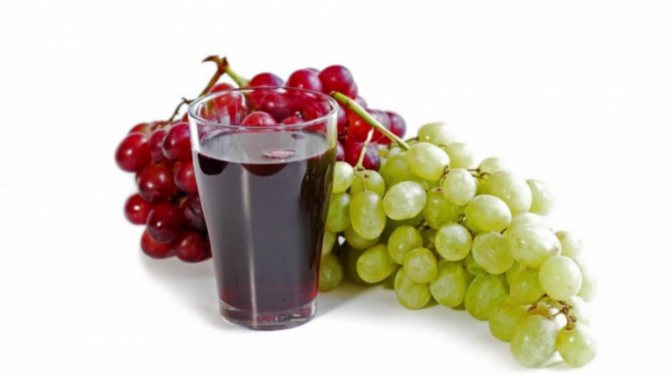

White varieties are technical and table varieties, these include berries of white, light yellow and green colors. Berries are used for processing and food, juices, wines, compotes are prepared. Russian gardeners choose the varieties Arcadia, Aligote, White Muscat, Chardonnay. The average ripening period is 130 days, care consists of traditional watering and dressing. The berries can withstand temperatures down to -20 ° C, but it is recommended to cover them with protective material for the winter.
Dark varieties are famous for their sweet and juicy taste, pleasant berry pulp. The color in dark varieties is black, blue, purple, burgundy, brown. Of the frost-resistant grapes, Black Delight, Codryanka, Athos are noted. Dark grapes are rich in sugars and contain healthy vitamins and minerals.
Pink grape varieties are loved for their attractive appearance - the berries are light red, pinkish, with an amber tint. Popular varieties Russian early, Julian, Tason. The berries are universal in use, the plants are unpretentious in the care.Rose grapes are grown by both amateur gardeners and experienced farmers.
Popular non-covering varieties
A large and sweet fruit is the key to the success of the grower, but in cold winters, one should also take into account the ability of the species to tolerate frost. By planting uncovered grapes, you can avoid many problems and reduce the amount of work on the site. The main thing is to know the varieties that will best tolerate frost.
Jupiter
If there is a desire to grow wine grapes uncovered, then the best variety will be Jupiter, which can withstand frosts down to -27 ° C. It is early dark, ripens in 3.5 months, and berries on bunches up to 0.5 kg. The taste is pleasant, nutmeg, has no seeds. Fleshy and sweet, well pollinated and happy with a rich harvest.
Alpha
The uncovering Alpha grape is an isabelle. Its brushes are not large, about 200 g. The bush is quite strong, it develops well, the vine is formed early. The bush has large leaves, so it is perfect for a gazebo. The berries are round, dark blue, becoming almost black when overripe.


Alpha
The ability to withstand extremely low temperatures down to -35 ° C is officially registered. Unpretentious, resistant to disease, has a high appeal.
Important! Alpha makes delicious juice and wine.
Among the shortcomings are noted:
- susceptibility to chlorosis;
- a large number of stepchildren;
- love of birds;
- the need for regular watering;
- exactingness to the ground;
- inability to endure carriage.
It is Alpha that does not tolerate drought at all; watering should be carried out regularly and in large quantities.
Platovsky
One of the most impressive grape varieties is Platovskiy uncovered, which tolerates frost well, is not susceptible to disease, has a bright taste, and the wine from it exceeds all expectations. The weight of the bunch is only 250 g, the color of the berries is greenish-yellow, with a lot of sun it becomes orange-brown.
Best for different growing regions


For the coldest regions of Siberia, it is recommended to choose frost-resistant varieties that can withstand temperatures down to -40 ° C. These are Amur breakthrough grapes, Lydia, Aleshenkin. With such varieties, gardeners can be sure that the shoots will not freeze, they will delight in the summer with juicy and large berries.
For milder frosts (up to -25 ° C), choose the grapes Ladies fingers, Tukay, Cardinal. For the winter they are covered with thick burlap, the protection is removed in late April or early May. Such varieties are suitable for the Chelyabinsk, Sverdlovsk, Orenburg regions.
In central Russia and the Moscow region grapes Isabella, Pink pearl, Taifi are grown. As a rule, the lands here are more suitable for growing fruit crops. The grapes rarely get sick, and they are not troublesome to care for.
Table frost-resistant varieties
Winter-hardy grapes are grown in most of Russia. The fragrant southern berry has not only adapted well to difficult conditions, but also amazes with its high sugar content with a rather small amount of sun.
Donskoy agate
An early ripe grape variety, forms large round berries weighing up to 5 g, and bunches of 0.5 kg, tolerates frosts down to -26 0С. It gives a consistently high yield, which should be removed as late as possible, then the berries will accumulate as much sugar as possible.
Delight
Another vigorous species is the frost-hardy Delight grape, capable of withstanding frosts down to -25 ° C. Its clusters reach 1.5 kg. Has a high resistance to disease. A feature is that even if the bunches hang on the bush for a very long time, the taste of the species will not be lost, and the wasps are rather indifferent to the species.
Muromets
A fairly old variety that has won its fans and, despite the appearance of more and more names, the species does not lose its popularity. The color of the berries is dark purple, the weight is up to 5 g, the weight of the bunch is about 0.5 kg.The taste of grapes is compared to black cherry, it is harmonious and pleasant. It tolerates frosts down to -26 ° С.
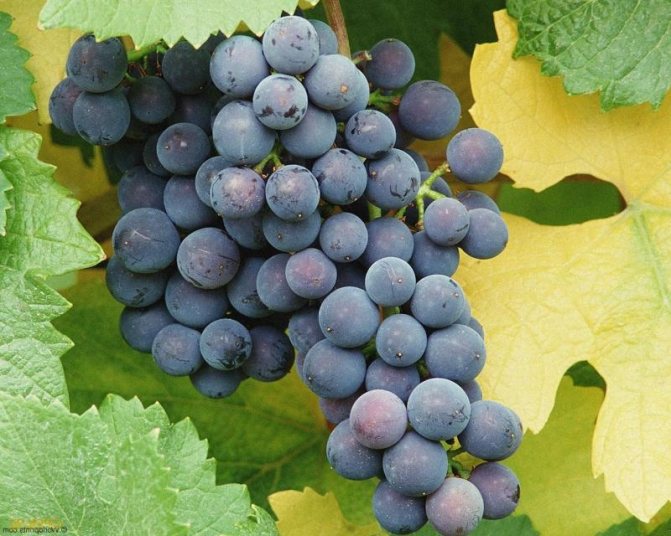

Muromets
Taiga emerald
This species has high winter hardiness, is able to withstand frosts down to -30 ° C, ripens early. It is a transparent white grape with a light strawberry flavor. Able to pick up a lot of sugar in berries, even with little sunlight during the ripening period.
Top best
How to choose a frost-resistant grape variety? To begin with, it is recommended to study the top of the best - their taste and marketability, yield and characteristics.
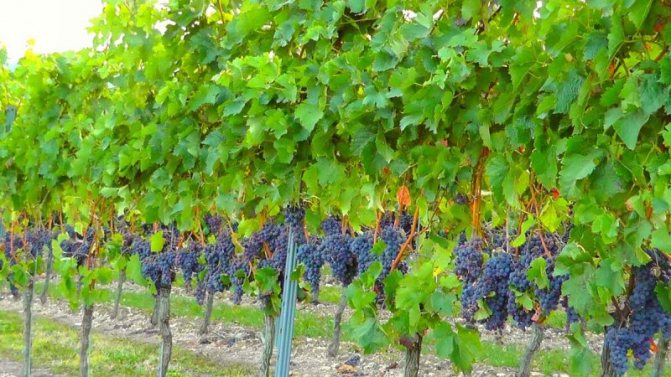

Isabel
The popular Isabella grape variety appeared in America and in a short time spread throughout the world. Gardeners are attracted by the appearance of the fruit - blue-violet berries with a dense white bloom are beautifully collected in a large bunch. The weight of the hand reaches 2 kg.
Isabella's taste is rich, sweet and juicy, with a strawberry aroma. The skin is firm, the flesh is tender and pleasant. Ripening period is about 6 months from the date of the appearance of the first buds. The plant is tall, so spacious areas are chosen for planting it.
Lady fingers
A mid-season variety with a ripening period of about 140 days. The bushes are vigorous, the leaves are curled, the color is rich green. The bunches are large, conical, the weight of one reaches 400 g. The fruits are elongated, the skin is thin, the pulp is of medium density.
Depending on the subspecies of the variety, the color can be light green with a yellow tint or pinkish. Ladies' fingers are appreciated for their pleasant sweet and sour taste with a tart aftertaste. Productivity - about 4 kg per 1 sq. m.
Lydia
The technical grape variety Lydia is often confused with Isabella - both varieties originated in America and share several similarities. Bushes grow quickly, differ in power. Up to 40 kg of delicious grapes are harvested from one bush per season. The berries ripen gradually, the fruiting period is extended.
The shape of the fruit is round, the color is violet-red, during ripeness it can be brown. The skin is dense, so the harvest is suitable for long-term storage. The pulp with a strong berry aroma, the taste is sweet and tart. Lydia grapes are used for fresh consumption or juices and compotes are prepared.
Sharov's riddle
The superearly variety ripens in 3-3.5 months. The bushes are small, the leaves are medium in size. The weight of the bunch is about 500 g, the shape is spreading. The berries are round, the weight of one varies from 2 to 3 g. The color is dark blue or black, there is a slight waxy coating.
The pulp is pleasant, with small bones inside. Berry-fruity taste, sweet aroma. After ripening, the fruits do not crumble, they stay on the bushes for a long time. After harvest, they are stored in a cool place for up to 80 days. Productivity - about 20 kg per plant per season. The variety is popular in Russia, Belarus and Ukraine.
Taiga
The name of the variety speaks for itself - Taezhny is suitable for growing in the harsh conditions of the Siberian and Ural winters. Vigorous bushes, sprawling shoots. Bunches are conical in shape, weight - about 300 g.
The shape of the fruit is spherical, slightly elongated, the weight of the berry is 2-3 g. The color is dark purple or black, the peel is of medium density, with a slight light bloom. The taste is sweet, without sourness. In application Taiga is universal - suitable for fresh consumption, processing, long-term storage. Productivity - about 20 kg per bush.
Amur breakthrough
The height of the bush reaches 2.5 m, so the Amur breakthrough is planted in spacious areas. The weight of the bunch is about 350 g, the berries are dark blue, rounded. The weight of one is 3 g, the dense skin protects the crop from cracking. The Amur breakthrough is resistant to diseases, withstands frosts down to -40 ° C, therefore it is suitable for growing in the coldest regions.
The taste is pleasant, sweet and sour, there are few seeds. It is important to monitor the level of moisture in the soil - the variety does not tolerate long-term lack of watering. Productivity - 10 kg of fruits per plant.
Pink pearl
The variety got its name due to its beautiful red-pink spherical fruits. The berries are collected in a conical bunch weighing 400-500 g. The growing season is no more than 120 days. Berry weight - 5 g, pulp of medium density, tender. Classic grape taste, pleasant. The skin is thin, so Pink pearls are not suitable for long-term storage. Over the summer, gardeners collect about 8 kg of ripe grapes from one bush. It is recommended to eat the berries fresh or process them immediately after harvest.
Tukay
The Russian variety Tukai is appreciated for its winter hardiness and unpretentious care. The bunches are large - up to 1.5 kg, ripen by mid-July. The berries are tasty and sweet, with a bright nutmeg aroma and a high sugar content. The weight of one is 4 g, the skin is dense, the color is white-amber with green tints. The fruits do not crumble, they are rarely attacked by insect pests and diseases. Productivity - up to 20 kg per bush.
Interesting! The above varieties are not only suitable for growing in harsh climatic conditions, but are also often used for cooking. The sweet and pleasant taste of grapes is harmoniously combined with various products: pineapple, mushrooms, olives, chicken breast, cheese, herbs.
The most frost-resistant for arbors and arches
Lydia
The most beloved and widespread is Lydia. Bred by Williams Prince, a breeder from the USA from the Isabella variety, and received the name Isabella Pink there. It tolerates frost very well. The bunches are small. The berries are predominantly pink. They have an unusual, very pleasant taste. Suitable for arbors and arches.
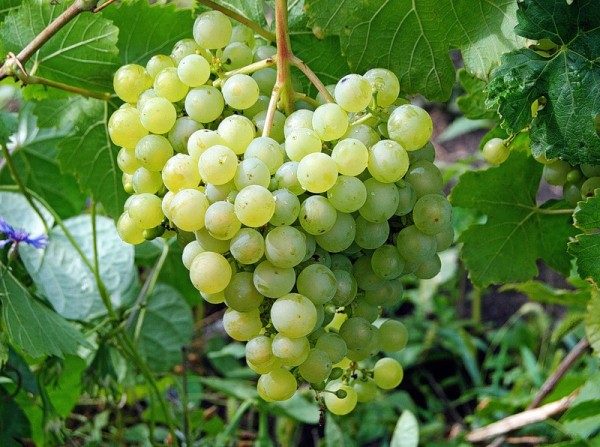

Grape variety Aleshenkin
Benefits:
- very early;
- does not require special care and special agricultural technology;
- cuttings root well;
- good yield without feeding;
- few seeds in berries;
- great taste;
- berries stay on the vine at frosts down to -25 ° C.
Disadvantages:
- the underground part is not resistant to frost;
- berries need a growth stimulant, otherwise peas are likely.
Lady fingers
It has a unique berry shape that looks like women's fingers. Hence the name. The official name is Khusayne Bely. Large sweet berries are arranged in large bunches. The taste is excellent, sweet, with hints of sourness. They are most often used for making raisins, as they are seedless.


Grapes ladies fingers
It is a grape variety native to Central Asia. Very picky about the sun and heat. It has a long ripening period, therefore it is not very suitable for central Russia. It is grown by few winegrowers. With good care and favorable weather, as well as occasional feeding, you can still get a good harvest.
Benefits:
- high productivity;
- strong growth;
- excellent taste;
- lack of bones.
Disadvantages:
- long ripening period - 130-160 days;
- crop instability over seasons;
- long survival time of cuttings;
- low frost resistance - up to -11 ° С;
- this grape is very fond of wasps and birds;
- extremely susceptible to various diseases - fungus, oidium, powdery mildew.
If all these shortcomings are not scared off from landing, then you should carefully approach the choice of location. It must be protected from drafts, there was a lot of sun. The soil should be light. Groundwater should be deep - more than 2.5 meters. Also for ladies' fingers you need a lot of free space - at least 2-2.5 meters in each direction. If the year turned out to be rainy, then spoiled berries must be removed in time. Otherwise, they will suffer healthy fetuses.
Tukay
The table grape Tukay was created at the Research Institute of Viticulture and Winemaking by Ya.I. Potapenko in Novocherkassk. The variety turned out to be unpretentious and frost-resistant. Tukay is loved for its rich harvest and long shelf life of berries, which are very tasty.
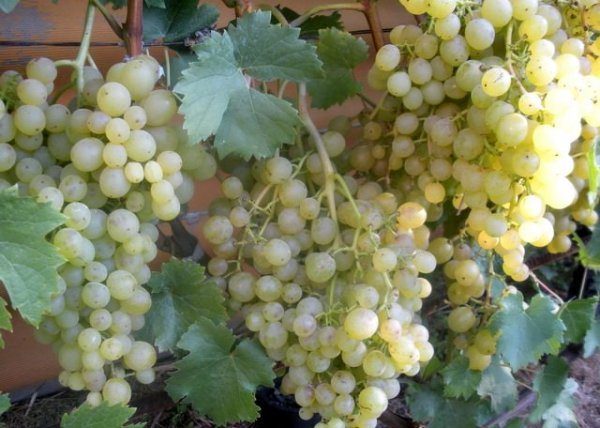

Tukay grapes
Benefits:
- early, in July already begins to ripen;
- large bunches - up to 1.5 kilograms;
- fragrant and tasty berries;
- has female and male flowers, therefore self-pollinated;
- fruits can be stored until spring, if the temperature regime is observed (from +1 to + 8 ° C).
Disadvantages:
- needs proper pruning, otherwise the clusters will be small;
- can be affected by a felt mite.
When pruning in the spring, 30-40 eyes are left, and the rest of the shoots are broken off by hand. It is difficult to get rid of a felt mite.
Cardinal
The variety was obtained by crossing grapes by the Queen of Vineyards and Alphonse Lavalle. The brushes are large: length 18-30 cm, width 12-20 cm. Weight - 350-500 g. The berries are large. Their weight reaches nine grams. The color of the peel is violet-red, with a waxy bloom.


Grape variety Cardinal
Cardinal belongs to the early varieties. Ripening time - 105-110 days. Self-pollinated.
Benefits:
- excellent taste and attractive appearance;
- large berries;
- suitable for long-term storage;
- good transportability.
Disadvantages:
- low resistance to diseases and pests;
- shedding of flowers and peas at high humidity;
- the need for careful care;
- poor frost resistance.
Isabel
This variety was bred in the USA by Isabell Gibbs. Hence the name. Isabella, like some other American "gifts" (Colorado potato beetle, ash-leaved maple), turned out to be very tenacious. He does not care about the Epiphany frosts of central Russia. Also, it is practically not affected by any diseases characteristic of grapes.


Grape variety Isabella
At one time there was information that Isabella was harmful, since a lot of methyl alcohol is released during the preparation of wine, but later this information was denied.
Benefits:
- taste qualities;
- low calorie content;
- high productivity;
- unpretentiousness.
Disadvantage for some winegrowers, the late harvest period can be called October-November.
Rylines Pink Seedlis
Of all the varieties described in this article, Rylines Pink Seedlis differs in that it lacks seeds. The berries are in the shape of a ball, small, pink with strawberry aroma. The bunches are compact. Harvesting is in mid-September.
Growing features
Growing frost-resistant grapes has the following features:
- The vine of culture does not require shelter. Even if tissue is damaged, cultures are independently restored or replaced by young shoots.
- In order for the plant to produce a crop, it is necessary to prune and rejuvenate the bush in the spring.
- The plant requires frequent watering.
- During the ripening of the bunches, it is necessary to add additional nutrients, since everything goes to the development of berries.
In the first three years after planting the seedling, shelter is mandatory. In the next period, the shelter of the vine is not used.
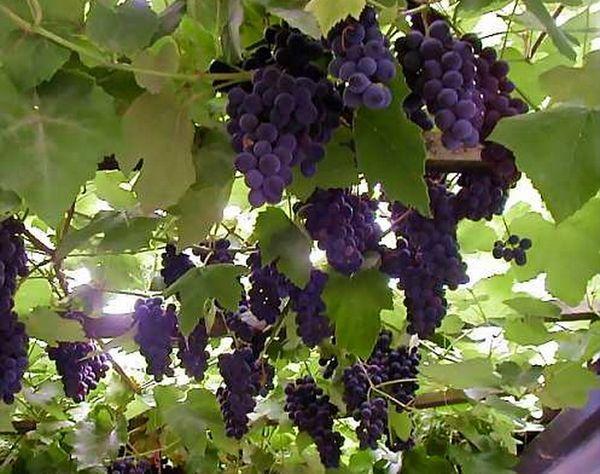

Rules for caring for uncovered grapes
All frost-resistant grape varieties that do not provide shelter for the winter require proper care. In addition to timely harvesting and autumn-spring pruning of the bush, it is recommended:
- Make a special design for branch development and support. Metal pipes are dug in near the row and the wire is fixed on them. For vertical gardening, bush stems are tied up at different heights.
- Combine feeding and watering procedures without using chemical fertilizers. Chicken droppings diluted with water in proportions of 1:10 will be optimal for frost-resistant vines. Half a bucket is added to 1 square meter.
- Fertilize in stages. The first time the vine is fed at the growth stage of 15 cm, the second - after the formation of the ovary. The last stage of feeding is carried out when the berries have already gained color.
- Timely pruning. At the beginning of spring, weak branches are removed and healthy ones are rejuvenated. From the extreme point of the branch, you need to count 3 buds and cut the plant at a right angle. The procedure is relevant during the formation of overgrowth in the summer. They work with a pruner, knife or hacksaw.


In order for the grower's actions to bring results - good yields, it is important to correctly and consistently carry out care measures. In the first years of development, almost all frost-resistant grape varieties do not show winter hardiness characteristics. For 1-2 years, the summer resident will need to organize a traditional shelter. In the 3rd year of development, a test branch is left and, according to its condition, the type of wintering is determined.
Pest and disease control
Frost-resistant grape varieties are immune to pests and diseases, but improper care can cause the vine to become infected. And if the treatment is not started in a timely manner, then you can lose not only the crop, but also the plant itself.
The main task in the fight against diseases of frost-resistant grapes is their prevention.
There are two main types of grape diseases:
- infectious - they are caused by specific fungi, viruses or bacteria that are carried by the wind, working tools. The most harmful and dangerous among them are anthracnose, mildew, oidium, bacterial cancer, gray rot. They are easier to prevent, so it is important not to miss the first symptoms and take timely action. To do this, in the spring, 1-2 times the plant is treated with fungicides of a wide spectrum of action;
- non-infectious - caused by unfavorable weather conditions (strong wind, sharp cold snap, early frosts, prolonged rains). Such diseases are prevented by correct agrotechnical measures and careful care.
Natural enemies of grapes are beetles, larvae, wasps, beetles, bears, cicadas. They damage vines, buds, berries, leaves. These processes inhibit the development of the plant and reduce the volume of the crop. Methods of combating them include mechanical soil cultivation, weed control, manual collection of pests, and timely spraying with chemicals.
Highly resistant non-covering hybrids
Varieties that are intended for cultivation in regions with cold weather conditions. The advantage of these crops is that they do not need to be covered. Exposure to low temperatures does not affect their yield.
Reline Pink Seedlis
A distinctive feature of the variety is that it has no seeds. The disadvantages include small berries that are pink in color.
Taiga emerald
Despite its versatility, the variety does not require shelter for the winter. It is resistant to disease and tolerates low temperatures well.
Valiant
Ripens early. Differs in properties to withstand a drop in temperature up to 40 degrees. Small bush, thin vine, dark berries.
Triumph
Before winter, most of the shoots die off on their own, so pruning is not carried out. The bunches are large with large berries, light green in color.
Kay Gray
The hybrid plant is distinguished by tall bushes and a very early ripening period. The bunches are large, the berries are white. The taste is sour, the flesh is tender.
Moore Earley
The culture ripens early, the berries are round and sour. The advantage is large clusters that have a dense structure. It is very often used by gardeners for the production of wines.
Venus
The plant does not require maintenance, it grows in almost any conditions. The berries are small. The taste is sweet, delicate. The rind is dark blue. The vine is often used as a garden decoration.
See also
Description and cultivation of grape varieties Korinka Russian
To read
Lando Noir
The plant has an average ripening period, unpretentious care and is rarely affected by diseases. Bunches are small, loose, sweet, medium-sized, dark blue fruits.
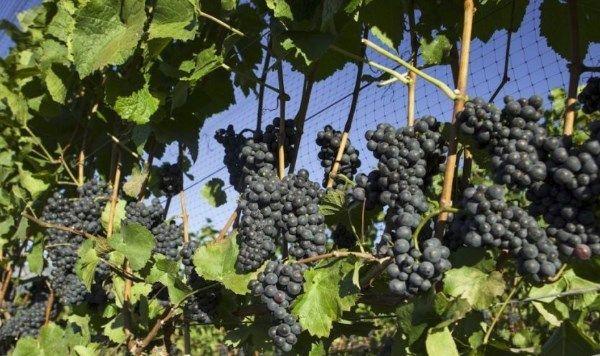

Louise Swenson
The culture has an average ripening period. The brushes are large, dense in structure. The berries are green. The pulp is juicy, sweet. Differs in productivity regardless of weather conditions. Has resistance to fungal diseases.
Somerset Seedlis
The plant is small. The bunches are small, loose, medium-sized grapes with a high sugar content. The skin color is light pink. After ripening, they can be stored on vines for a long time.
Prairie Style
Withstands temperatures up to -40, does not require shelter. The bush has hidden buds, which, when the bush is damaged, give young shoots. Medium-sized bush. The grapes ripen early, the clusters are large. The berries are light white.
Vaskovsky
Ripens early, can be used for wine making or canning. Withstands medium temperature drops. The berries are red, sweet, suitable for storage.


Shatilova
The bush is medium in size and has a light bark, which is suitable for regions with cold weather and short summers. The berries are round, light green in color.
Gulya
The grapes are sweet, dark in color. Bunches are small, branched. It is more often used for the production of wines and wine drinks.
Khasansky Bousa and Khasansky sweet
Khansky grape variety is distinguished by powerful bushes and developed roots. The berries are blue or purple in color, large. The bunches are dense, most often the type of culture is used for the preparation of juices and wines.
Siberian cherry
The culture has thin vines, very often used to decorate gazebos. The bunches are dense, small in size, the berries are blue. The grapes are fragrant sweet.
Important. The culture tolerates low temperatures, however, root buds can often be damaged during the spring thaw. Therefore, it is necessary to protect the root from such a problem.
Bashkir early
The culture is distinguished by an early ripening period, as well as large leaves. The plant is resistant to diseases and adverse weather conditions. The grapes are dark blue.
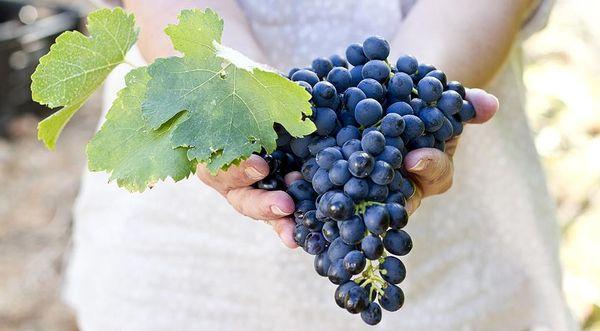

High frost resistance grapes
Varieties have been developed that can withstand lower temperatures. Their frost resistance is surprising, but it helps gardeners living in the Urals, the Far East and Siberia also grow their fruits in their private plots.
Pleasant to the taste with the aroma of Isabella, it has rather small clusters, they weigh up to 110 g, and one berry is only about 4 g. The color is dark, red, slightly pinkish, and in the aroma many people catch a light taste of strawberries.
This species is considered mid-season, the berries ripen for about 5 months. Lydia is resistant to many diseases, chlorosis may be the only weakness. But the main advantage is that it can withstand frosts down to -26 ° C without shelter.
Its high yield and ability to tolerate excess moisture have made it popular, the bunches will decorate any gazebo, and many will like the aroma.
Frost resistance allows you to grow the plant even in Siberia, getting a high yield. Early ripe Tukay is able to withstand temperatures down to -25 ° C. If the growing region is colder, then you cannot do without shelter.
If you follow the storage conditions, then the clusters of Tukai are able to last until spring, they tolerate transportation well. The berries of this species are round, ranging in color from green to amber, depending on the number of sunny days. The average bunch size is 0.8 kg, but the berries themselves are quite small, about 4 g.
The most frost-resistant for arbors and arches
Lydia
The most beloved and widespread is Lydia. Bred by Williams Prince, a breeder from the USA from the Isabella variety, and received the name Isabella Pink there. It tolerates frost very well. The bunches are small. The berries are predominantly pink. They have an unusual, very pleasant taste. Suitable for arbors and arches.
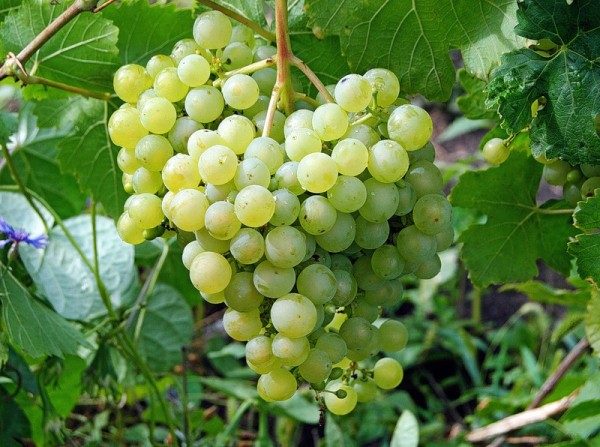

Grape variety Aleshenkin
Benefits:
- very early;
- does not require special care and special agricultural technology;
- cuttings root well;
- good yield without feeding;
- few seeds in berries;
- great taste;
- berries stay on the vine at frosts down to -25 ° C.
Disadvantages:
- the underground part is not resistant to frost;
- berries need a growth stimulant, otherwise peas are likely.
Lady fingers
It has a unique berry shape that looks like women's fingers. Hence the name. The official name is Khusayne Bely. Large sweet berries are arranged in large bunches. The taste is excellent, sweet, with hints of sourness. They are most often used for making raisins, as they are seedless.
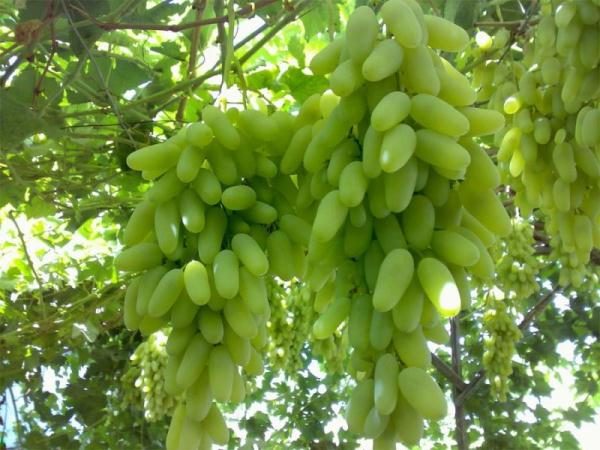

Grapes ladies fingers
It is a grape variety native to Central Asia. Very picky about the sun and heat. It has a long ripening period, therefore it is not very suitable for central Russia. It is grown by few winegrowers. With good care and favorable weather, as well as occasional feeding, you can still get a good harvest.
Benefits:
- high productivity;
- strong growth;
- excellent taste;
- lack of bones.
Disadvantages:
- long ripening period - 130-160 days;
- crop instability over seasons;
- long survival time of cuttings;
- low frost resistance - up to -11 ° С;
- this grape is very fond of wasps and birds;
- extremely susceptible to various diseases - fungus, oidium, powdery mildew.
If all these shortcomings are not scared off from landing, then you should carefully approach the choice of location. It must be protected from drafts, there was a lot of sun. The soil should be light. Groundwater should be deep - more than 2.5 meters. Also for ladies' fingers you need a lot of free space - at least 2-2.5 meters in each direction. If the year turned out to be rainy, then spoiled berries must be removed in time. Otherwise, they will suffer healthy fetuses.
Nadezhda Aksayskaya
Canteen form of early ripening (110 days). The bush is medium-sized, the flowers are bisexual, the clusters are large. The berries are oblong, with a slight nutmeg aroma. Ripening of shoots and rooting of cuttings are good.
Grapes of this variety need to be normalized (30-35 eyes per bush). Relatively resistant to mildew, powdery mildew and gray mold. Bushes need to be covered for the winter.
| Sugar content of pulp (%) | Bunch weight (g) | Berry weight (g) | Ripening period | Trimming (eyes) |
| 16-18 | 700-1200 | 8-12 | First half of August | 5-7 |

